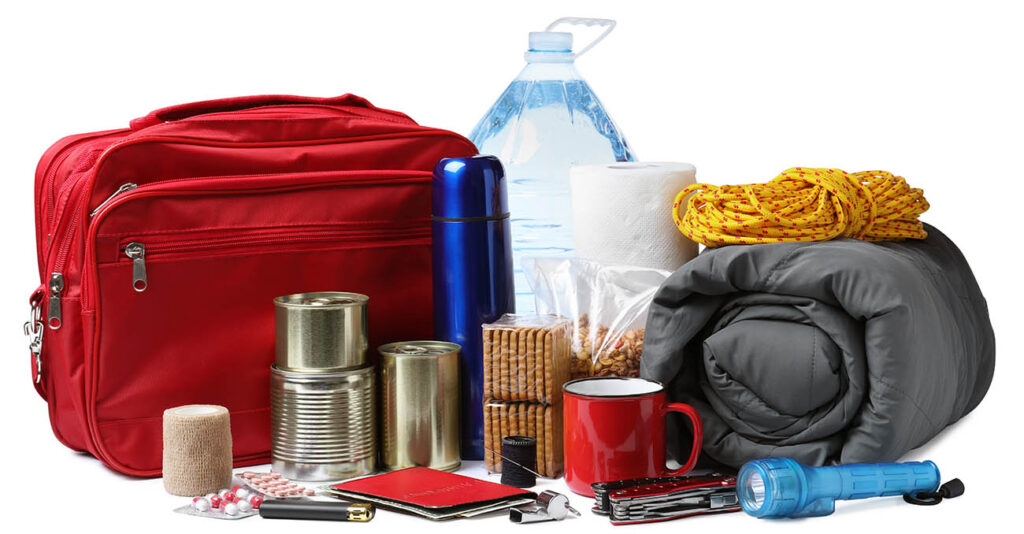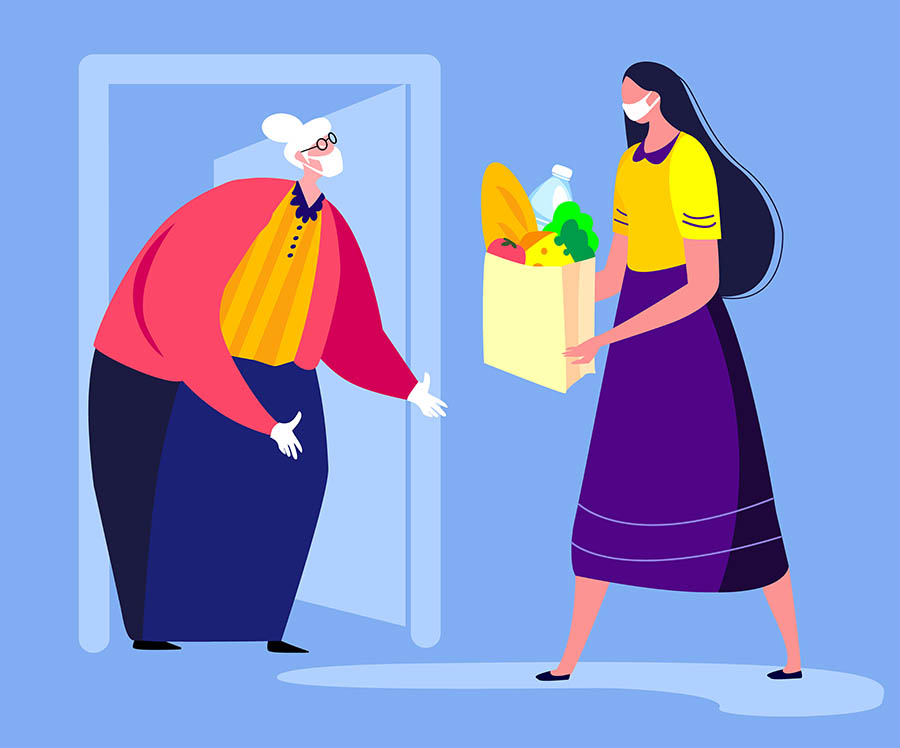Breadcrumb
Older, Wiser, and Prepared for Disasters
Published on December 21, 2023
The Disaster PrepWise program helps older adults create a personalized disaster management plan.

THE AUGUST 2020 DERECHO—the powerful windstorm that swept through parts of Iowa and the Midwest—left thousands of residents without electricity, cellular service, or internet access. Homes were damaged and roads were blocked with downed power lines and trees. For older adults and those with disabilities, these conditions can be especially challenging or even life-threatening.
To help this population and their families prepare before an emergency happens, researchers at the University of Iowa have developed a program called Disaster PrepWise. Led by Sato Ashida, associate professor of community and behavioral health, the program guides individuals through the process of developing a personalized disaster management plan for an emergency in their home or community.
Supporting Older Adults
This program started about a decade ago when Ashida was inspired by a tool called PrepKids, a disaster preparedness program designed for rural families with children with special needs. “We really needed something like this specifically for older adults,” Ashida says. “They are vulnerable, and they need support in preparing.”
Ashida’s team conducted an extensive review of the literature on older adult preparedness and sought input from service providers. “We took this information and made it fit the needs of older Iowa adults,” she says of the program.
Disaster PrepWise has been tested and refined over the years to its current form. The program is offered free of charge and is delivered by trained interventionists who guide participants through five steps of planning, with the goal of being prepared to care for themselves for up to three days.
The five steps are: 1) complete a personal and household assessment; 2) develop a personal emergency network (identify three people outside of the household you can go to for assistance); 3) gather emergency information and important documents; 4) keep a 3-5 day supply of medications/ medical supplies; 5) build two emergency supply kits (one for home, one “to-go”).
“We’ve published a couple of research papers showing that people’s preparedness behavior increased and their support systems were enhanced after they participated in the program,” Ashida says.
A Tool for Planning
Ashida and her team have collaborated with numerous state and community partners to develop and deliver Disaster PrepWise. One of its longtime partners is the Heritage Area Agency on Aging (HAAA), which serves older adults, adults living with disability, and caregivers in east-central Iowa.
“Some of the biggest considerations for older adults and people with special needs in an emergency are power, caregivers, evacuation and transportation, medications, and any required medical machines,” says Kellie Elliott-Kapparos, HAAA’s integrated services director. “These families need to have some extra conversations and planning, and PrepWise is a great tool for doing that.”
“PrepWise is right in line with our mission of helping people remain independent and remain in their home for as long as they can,” adds Harrison March, HAAA’s community engagement coordinator. “If there’s a disaster but you’re not ready for it, a house or living setup that was safe might not be safe for you anymore. But if you’re prepared for that disaster, you can remain in that home longer than if you weren’t ready.”
Working with Partners

As Disaster PrepWise has evolved over the years, it has received a variety of grant support, with the most recent grant from AmeriCorps. The grant provides the Disaster PrepWise program with 13 AmeriCorps members (8 this fall and 5 next summer), most of whom are college students.
“We train them to do Disaster PrepWise interventions, presentations, and education, then we send them to our partner agency host sites,” says Ashida. “We’ve established new partnerships with local public health agencies, county emergency management agencies, and HAAA.”
Tiffany Wunderlich, a first-year Master of Health Administration student in the College of Public Health, is an AmeriCorps member who has worked with Disaster PrepWise since summer 2021. She’s currently a graduate research assistant for the program.
“That first summer my role was to be an interventionist for the program. I would go to participants’ houses, maybe the community library, anywhere that participant wanted to meet, and I would set up a personalized disaster plan with them,” she says. Most of her visits have taken place within a 90-minute drive of Iowa City.
“It’s all done online. By the end of the session, we can download their plan and put it on a flash drive, PDF, or print or email it to friends, family, or neighbors,” she says.
Wunderlich says the feedback from the individuals she’s worked with has been positive. “Having Disaster PrepWise provide a location for gathering all their information in one place is really helpful,” she says. “Ensuring that we’ve set them up with an adequate support system is one of the bigger aspects I would highlight within the program.”
Reaching Different Populations
The Disaster PrepWise program has been modified in several ways to meet the needs of different populations. The materials have been translated into Spanish, with plans to add more languages in the future, Ashida says.
As part of her dissertation, Lena Thompson (14MPH, 23 PhD) helped outline cultural adaption needs for the Sac & Fox Tribe of the Mississippi in Iowa, also known as the Meskwaki Nation.
“Through conversations with Meskwaki organizations and with Elders, we made a list of 25 specific adaptations that we would like to implement in Disaster PrepWise for the Meskwaki community,” Thompson says. “Some of these adaptations were cultural adaptations, others were tribal-specific additions, and we also found ways to make the program more user-friendly. We hope to use this list as a guide in writing a grant proposal to fund future work on this project.”
Ashida also has a grant from the National Institutes of Health for a study called Disaster PrepWise: Caregiving. This adaptation is geared to caregivers of individuals who have been diagnosed with dementia. The goal of the research is to better understand how having a disaster plan impacts participants’ stress, resilience, preparedness, and social support in preparation for a disaster.
“It’s really about keeping the care going,” Ashida explains. “If a disaster hits, your home health care may not be able to come, your meals may not be delivered, or the electricity might be out for a while. All of those things can have a huge impact on the caregiver and the person receiving the care.”
Because of its comprehensive nature, the Disaster PrepWise program can serve as a valuable planning tool for every household.
“I would encourage anybody to look at Disaster PrepWise. Unfortunately, we’re very experienced in our area with emergencies and disasters,” says HAAA’s Elliott-Kapparos, referring to the derecho, past floods, and other emergencies. “We’ve seen time and time again, the more prepared anyone is, especially anyone with special needs, it really makes a world of difference in their ability to cope, but even more so, in their recovery. Somebody who has a plan recovers faster and more completely than someone who doesn’t.”
Learn more about Disaster PrepWise at cph.uiowa.edu/prepwise/